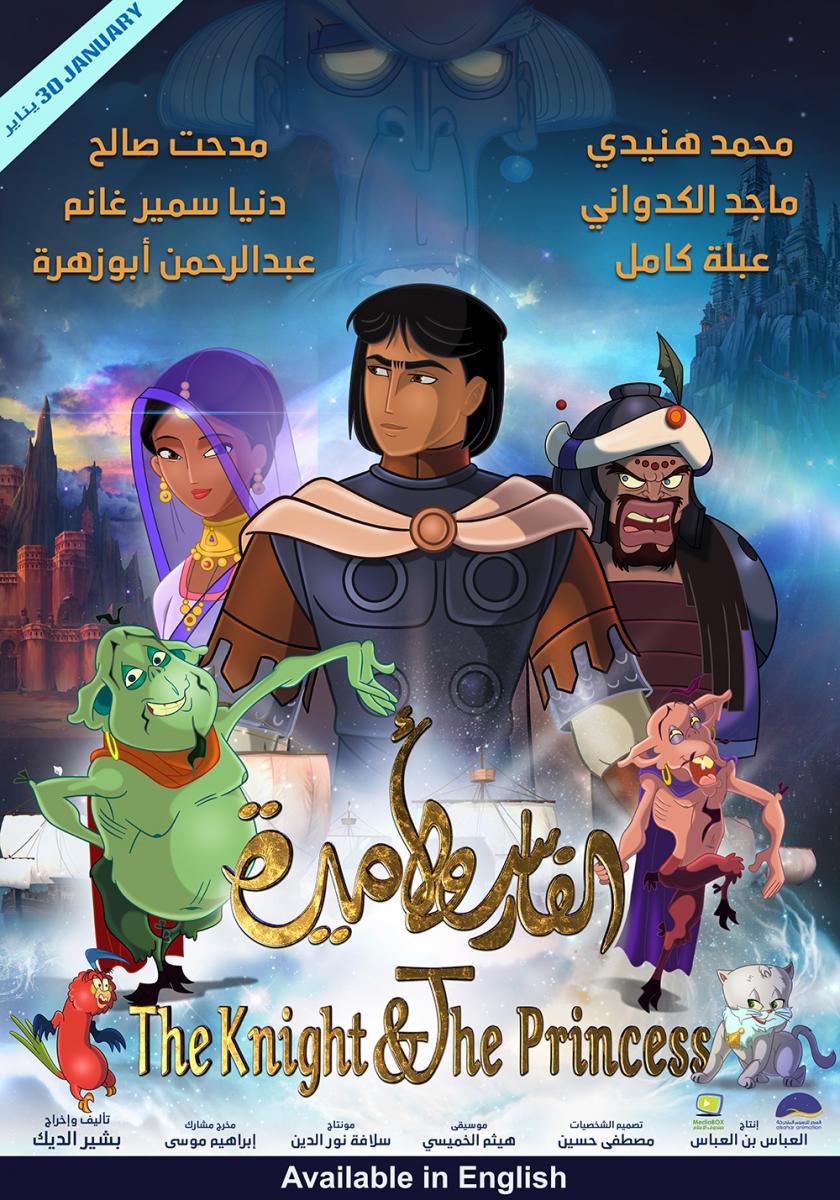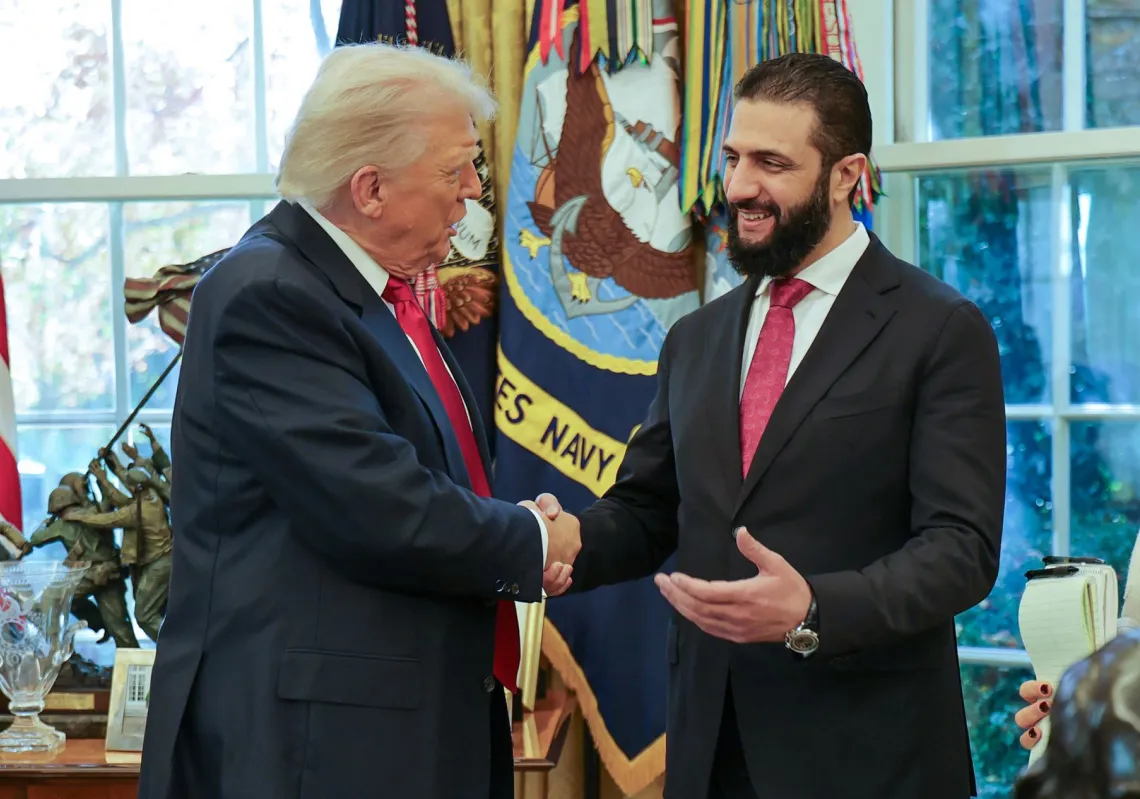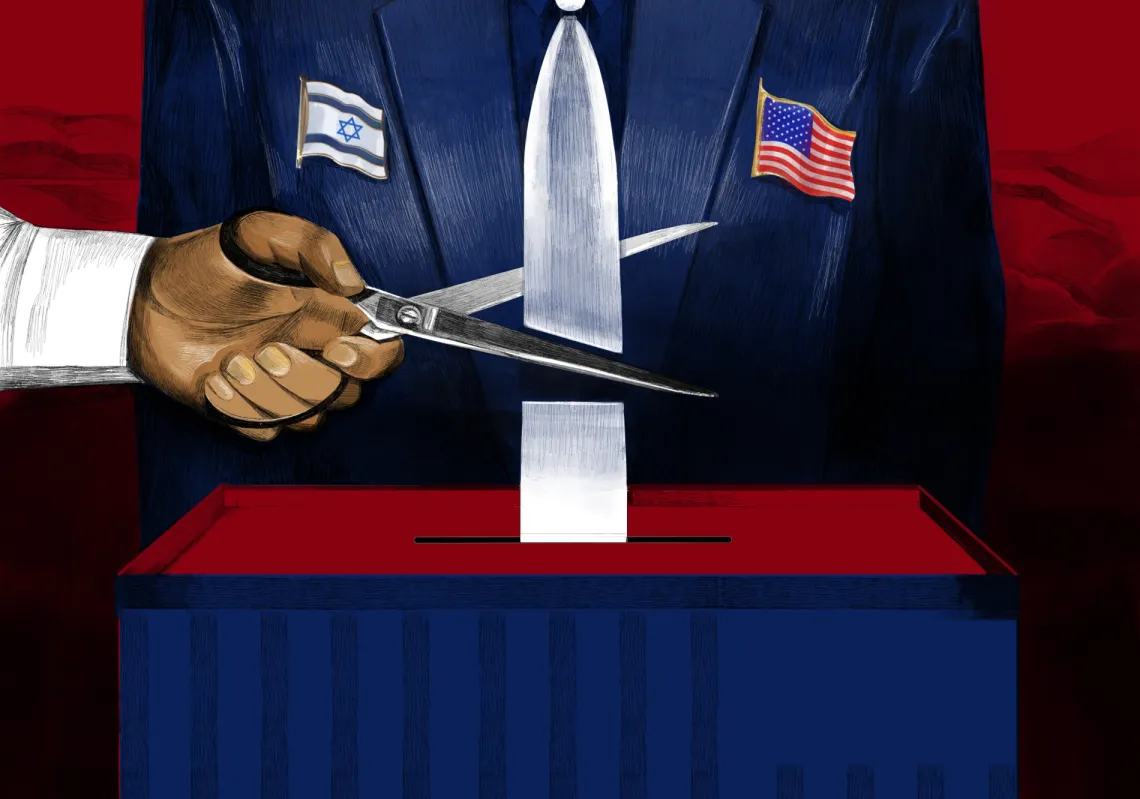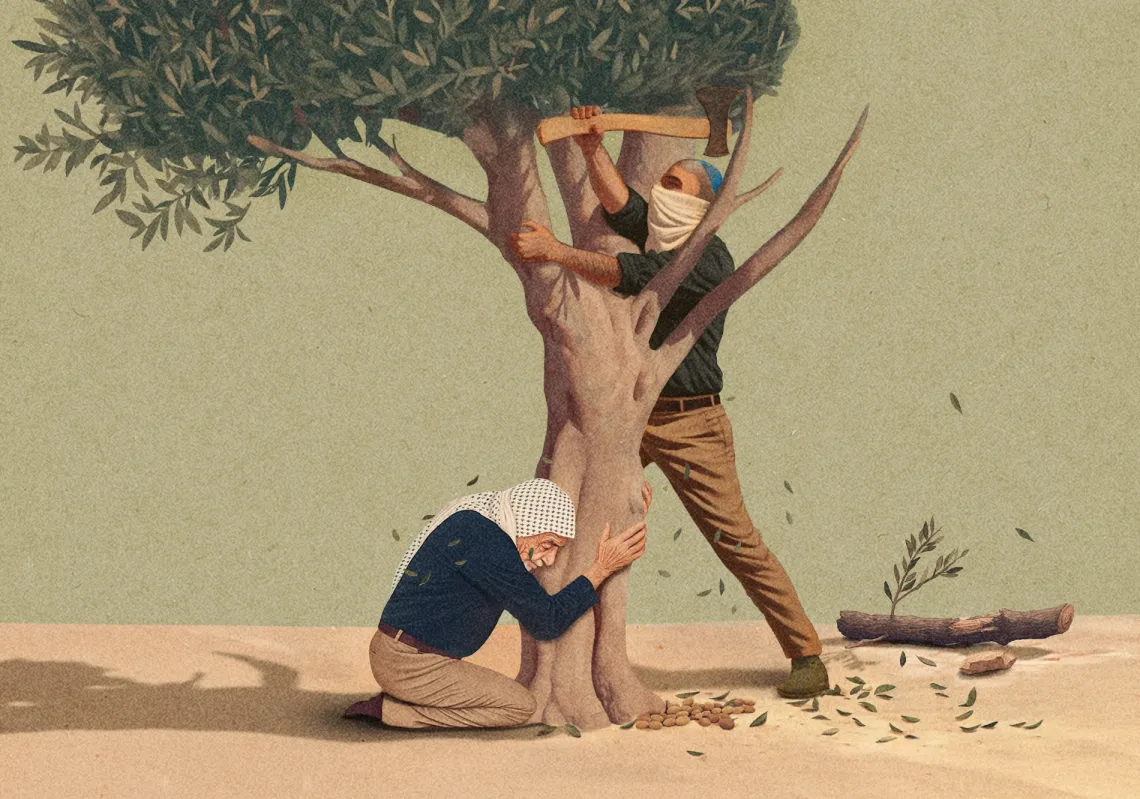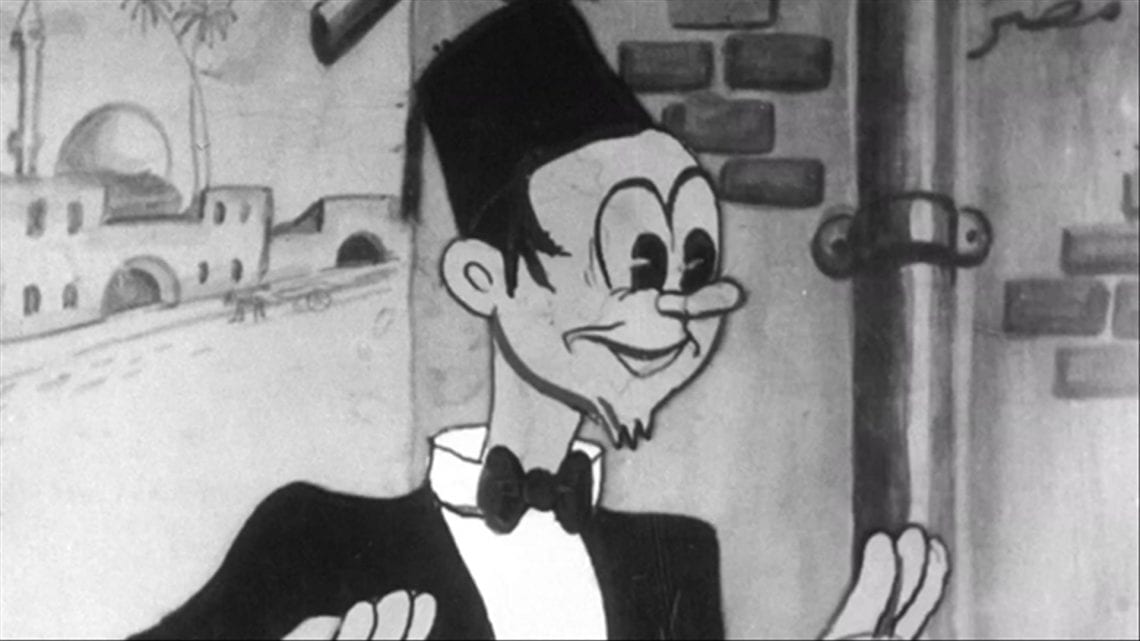
Animation continued to flourish in Egypt in the 1960s, when Ali and Husam Muhib, arts graduates leading a group of fellow illustrators and filmmakers, began producing a few low-budget films before taking charge of the animation department in the newly established Egyptian television. The main obstacle facing the Mohib brothers was the lack of trained artists, which forced them to do their best to train some of those who would later become animation professors at the Higher Film Institute and the Faculty of Fine Arts. In 1962 the Mohib brothers made The White Line, their first long film which, produced by Egyptian Television, was a mix of live action and animation techniques, as well as the first Arabic-language animation series, the thirty-episode Mishgias Sawah in 1979. The brothers became the most influential figures in animation production until the 1980s, though most of their work remained limited to advertising and propaganda with a few short films, animated series and songs.
As Egypt’s animation facilities expanded more diverse work had a chance to thrive – such as Zeinab Zamzam’s Islamic-themed clay animation film using old-fashioned Claymation techniques (A Terra-cotta Dream, 1997; Open Your Eyes, 2000). Egypt witnessed an expansion of animation facilities during the 1990s and 2000s. In addition to programs at universities, such as the one started by Ghazala at Minya University, there are at least 10 significant animation studios—including Abou El Nasr’s Cairo Cartoon Studio and Zamzam’s Zamzam Media—operating and producing animations for television, commercials, and the occasional short film. Much of this material is shown in other parts of the Arab world, and some are co-productions with Gulf states. (Historical Dictionary of Middle Eastern Cinema, 2010) In 2010 Mohamed Ghazala won the Animation Prize at the African Movie Academy Awards in Lagos, Nigeria. His was his country’s only representation in the entire competition, a three-minute cartoon entitled Honayn’s Shoe.
Given this long and rich heritage, the scarcity of animation films produced, as well as homegrown animators in Egypt is surprising. But one man is on a mission to animate Egypt and the Arab world. After 20 epic years in the making, Saudi film producer Abbas Alabbas premiered “The Knight and The Princess”, Egypt’s first ever animated feature film, and the first ever animated film created exclusively by Arab talents, at the ElGouna Festival in September last year. “Producing an animated feature film for any first time producer is not an easy task, almost impossible if your production cast also have not gone through such a production previously.” he told Majalla. Yet, with a “strong heart and great passion”, Alabbas was able to withstand substantial challenges as the horizon of his wildly ambitions vision stretched for two decades until he was able to turn what seemed like a distant dream into a colorful reality.
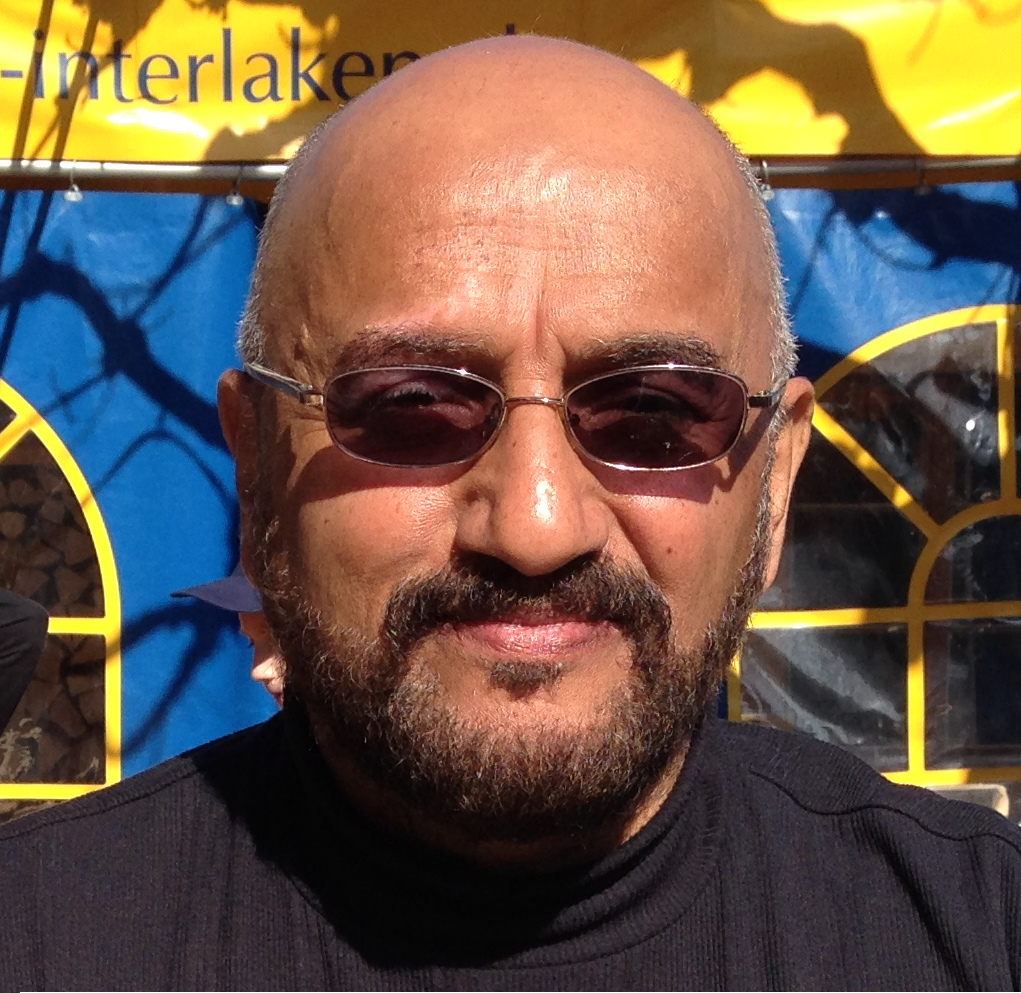
The seeds for what quickly became Alabbas’s “life-time goal” were sown when he was studying in America for his degree in Industrial Engineering and Engineering Administration and his son was almost 5 years old. Alabbas noticed the increasing influence cartoons had on the minds of children during their formative years. One particular cartoon, He-Man - ‘the most powerful man in the universe’ who goes against evil forces to save the planet - fascinated his son and he began to idolise the leading character. Although cartoons are entertainment, they also act as a powerful education for children who often absorb a lot from their favorite cartoons – they learn about their own culture, about values and mortality in their society, and about what makes a character a good or bad person. As such, Alabbas wanted the stories that would shape his son’s childhood memories to be embedded with aspects of Arab culture that are in sync with his real environments. “I wanted him to see other animation stories and heroes from our culture so I decided to go to Egypt to see what is available for my son. I was surprised that there was absolutely nothing. I found it frustrating and appalling that we don't have anything for our children to see their culture, their heroes and themselves represented in the series they watch,” Alabbas explains.
Armed with a mission to introduce young Arabs to key facets of their culture and identifiable characters to whom they can look up to, but not much else, Alabbas knew he had to start somewhere, so he spoke to his adviser at George Washington University about his newly found aspiration and he agreed to give him the opportunity to take a self-study research course in amination which a friend of his working in the animation industry would grade. With his unmistakable mix of unbridled enthusiasm and serious talent, Alabbas graduated with a 4.0 out of 4.0 GPA.
“After graduation I went to Egypt and established the Alsahar Animation Company. I spent two years training and building experience for the animators before we got our first series for the Arab Radio and Television kids channel. We then made animated series for Egyptian, Saudi and Qatari television, the MBC network, and many others. But all the series were made to the tune of the TV channel producers who dictate the story, the production timeline and the budget,” Alabbas recalls.
After learning some hard lessons about the animation industry, in 1998, Alabbas decided it was time to take things to new heights. “We decided to venture to make the first animated feature made entirely by Arab talents,” he said.
First, he began searching for a riveting story from Arab history that revolves around a hero that could “speak to a young generation” and would appeal to children’s appetite for adventure. When Alabbas and his team came across the story of 7th century Iconic Arab warrior Mohammed Bin Alkassem, whose story is packed with all the components of animated classics – a hero, pirates, a love story, villains and a great adventure -they knew immediately that they had uncovered a gem. “The story follows the amazing journey of a 15-year-old knight who saves women and children from pirates on the north Indian shores, finds his love and decides to free Sind from the tyrant king Daher.”
They then brought in one of the country’s best scriptwriters and directors, Basheer Eldeek, and the late cartoonist Mustafa Hussein. Next, Egyptian stars from past and present, such as Mohamed Henedy, Maged ElKedwany, Medhat Saleh, Donia Samir Ghanem, Amina Rizk, and Ghassan Matar, recorded the voice overs for the movie’s characters. For an indie studio, this was a huge expense.
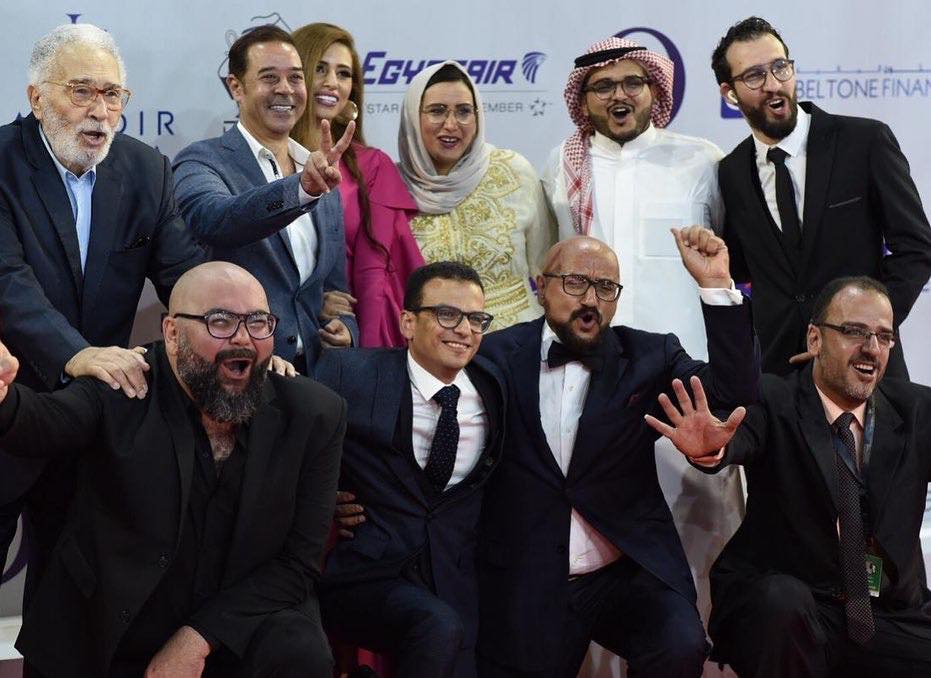
When it came to the production stage of the movie, the Alabbas found himself trapped between the paucity of talented home grown animators and a lack of funding. He quickly realised that if he wanted to dream big, he would have to think ever bigger, and this would require redesigning the landscape of the industry.
“We tried to get financing for our project but no one was ready to invest money in an industry that is dominated worldwide by Disney, but I was not ready to give up and took the decision to do it slowly but surely. We continued with the production of the film while also working on animated series for TV channels to help us finance the film's production. When we would gather enough funds we would complete a minute or so. 2D animation is extremely costly. A second has between 25 and 25 frames and if there are numerous backgrounds that could add up to 100 different drawings per second,” the Saudi producer said.
Alabbas explains that on top of having to stop production whenever they would run out of money, they also had to train and develop animators throughout decades.
“Animation production is costly and time consuming by the nature of the medium, it needs a strong heart and great passion to risk your time and money. Working with Arab staff increases the risk of trial and error at every step of the production hence the overall budget expense and the many unmet deadlines. We had an advantage, we had a dream, dreams don’t measure costs and require passion to make them come true.”
The 20 years Alabass invested – on and off- were well spent. Following its world premiere at ElGouna festival last year, the film won major plaudits. “We are proud to showcase the first Egyptian animated feature film created by an Arab crew, whose work is on par with prominent animated films from around the world. The film not only represents a significant milestone for the Arab film industry, but also helps it take crucial steps towards expanding its horizons through a genre that embodies creativity, imagination and talent in a brand new light in the region,” commented Intishal Al Timimi, director of El Gouna Film Festival. The film also made its way to the 9th Malmo Arab Film Festival in Sweden last October.
“The Knight and the Princess” has been chosen to open the 19th edition of Meknes International Animated Film festival in Morocco between February 20 and March 2. The festival, which is organised by the Aicha Foundation in partnership with the French Institute of Meknes, is the biggest animation film festival in the region, attended by thousands of passionate animated film fans from around the world. In its 19th edition, the festival has chosen Egypt as it’s guest of honor as it celebrates the 85th anniversary of the release of the first Egyptian and African animation film Mish-Mish Effendi, in the presence of over 30,000 animation film enthusiasts.
I hope that honoring Egypt’s illustrious animation history by celebrating another momentous milestone in the industry will inspire more young people in the region to look to people like Alabbas who are trailblazing a path for other aspiring animators and creatives in the region and to believe that no dreamer is ever too small and no dream is ever too big.
